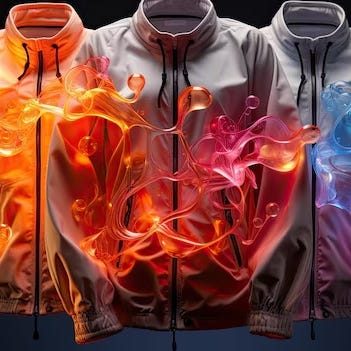In today’s fast-paced digital world, marketing isn’t just about selling products—it’s about connecting with consumers on a deeper, emotional level. While logic and reason still play a role in purchasing decisions, it’s the emotional triggers that often drive people to make impulsive choices. Marketers understand this well, and they have become masters at tapping into the emotional triggers that influence consumer behavior. By understanding and manipulating the psychological and emotional responses of their target audience, marketers can effectively craft campaigns that resonate and drive sales.
The Power of Emotional Marketing
Humans are emotional beings. Our decisions, even in seemingly logical situations, are often swayed by our emotions. This is because emotions play a vital role in how we process information, make decisions, and form memories. Marketers have long recognized that an emotional appeal is far more effective than a purely rational one. Research shows that people are more likely to remember and be influenced by advertisements that evoke emotions like joy, fear, surprise, or sadness.
For example, many advertisers use nostalgia to connect with consumers’ emotions. Nostalgic feelings of comfort or longing for the past can create a sense of familiarity, which leads to positive feelings toward a product or brand. Brands like Coca-Cola and Apple frequently use nostalgia to create campaigns that evoke warm memories, making their products feel like part of our history and identity.
Crypto Adoption: Mobile Wallets Are Exploding
The world of cryptocurrency has seen a dramatic rise in adoption over the past decade, with new technologies and services helping drive this growth. Among the most significant innovations in recent years are mobile wallets, which have made it easier than ever for people to access, store, and transact with cryptocurrencies. As more users seek ways to man…
Common Emotional Triggers Used by Marketers
Fear and Anxiety One of the most powerful emotional triggers used in marketing is fear. Marketers use fear to create a sense of urgency or necessity. For example, ads for insurance, health products, or home security often tap into consumers' fear of the unknown or the potential risks in life. The thought of something bad happening—whether it’s losing a loved one, facing a medical emergency, or being robbed—encourages consumers to act quickly and invest in protection.
Happiness and Joy Positive emotions like happiness, excitement, and joy are key drivers in consumer behavior. Marketers understand that consumers are more likely to make a purchase when they feel good. Many advertisements, especially those for lifestyle or luxury products, center around the idea of living a fulfilling, joyful life. For example, many perfume commercials focus on moments of bliss or romance, creating an emotional association with their product.
Social Connection Humans have an inherent need to belong to a group, and marketers exploit this emotional trigger by promoting products or services that create a sense of community. Social proof is often used in advertising, with testimonials, user reviews, and influencer endorsements acting as validation that a product is “the right choice.” Furthermore, ads that highlight connection and belonging—whether through family, friends, or shared experiences—help reinforce the emotional appeal.
Anger and Frustration Marketers also use negative emotions like anger or frustration to spur action. Ads that highlight social injustices or problems, such as environmental degradation or inequality, often lead consumers to feel compelled to take action. In many cases, brands position themselves as the solution to these issues, motivating consumers to buy products that align with their values or contribute to the change they want to see in the world.
Surprise and Curiosity Surprise is another emotional trigger frequently used in advertising. By presenting an unexpected twist or shocking visual, marketers create a sense of curiosity that draws people in. This approach is effective because it taps into the brain's natural tendency to pay attention to novel stimuli, making it more likely that the viewer will remember the brand or message. Think of viral ad campaigns with unexpected endings or clever reveals—these often become talk-worthy, increasing brand visibility.
The Ethics of Emotional Marketing
While emotional marketing can be highly effective, it also raises ethical concerns. Marketers need to be mindful of the line between triggering genuine emotional responses and exploiting vulnerabilities. For example, preying on people’s insecurities, using manipulative tactics, or creating unrealistic expectations can harm consumers and damage brand trust in the long run.
To strike a balance, ethical marketers focus on using emotional triggers in a way that aligns with the brand’s values and genuinely enhances the customer’s experience. Transparent communication and a focus on providing real value ensure that the emotional appeal doesn’t cross into manipulation.
Conclusion
In the end, emotional marketing is a powerful tool that can significantly influence consumer behavior. By tapping into the fundamental emotions that drive human decisions—fear, happiness, social connection, and more—marketers can craft compelling campaigns that resonate with their audience. However, it’s important that this power is used responsibly, with an emphasis on building authentic connections and delivering value to consumers. When done right, emotional marketing can create lasting brand loyalty and positive consumer relationships.





